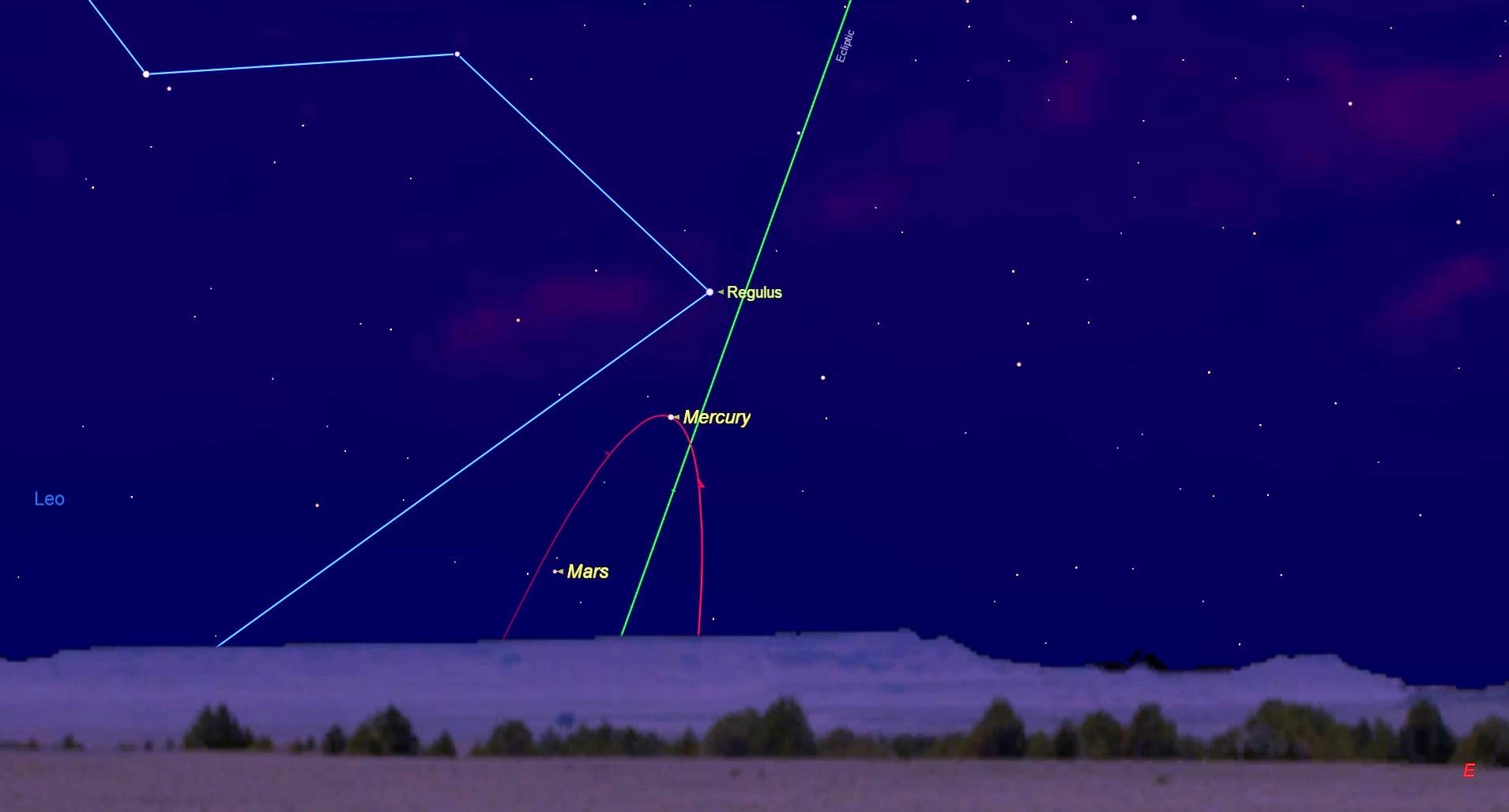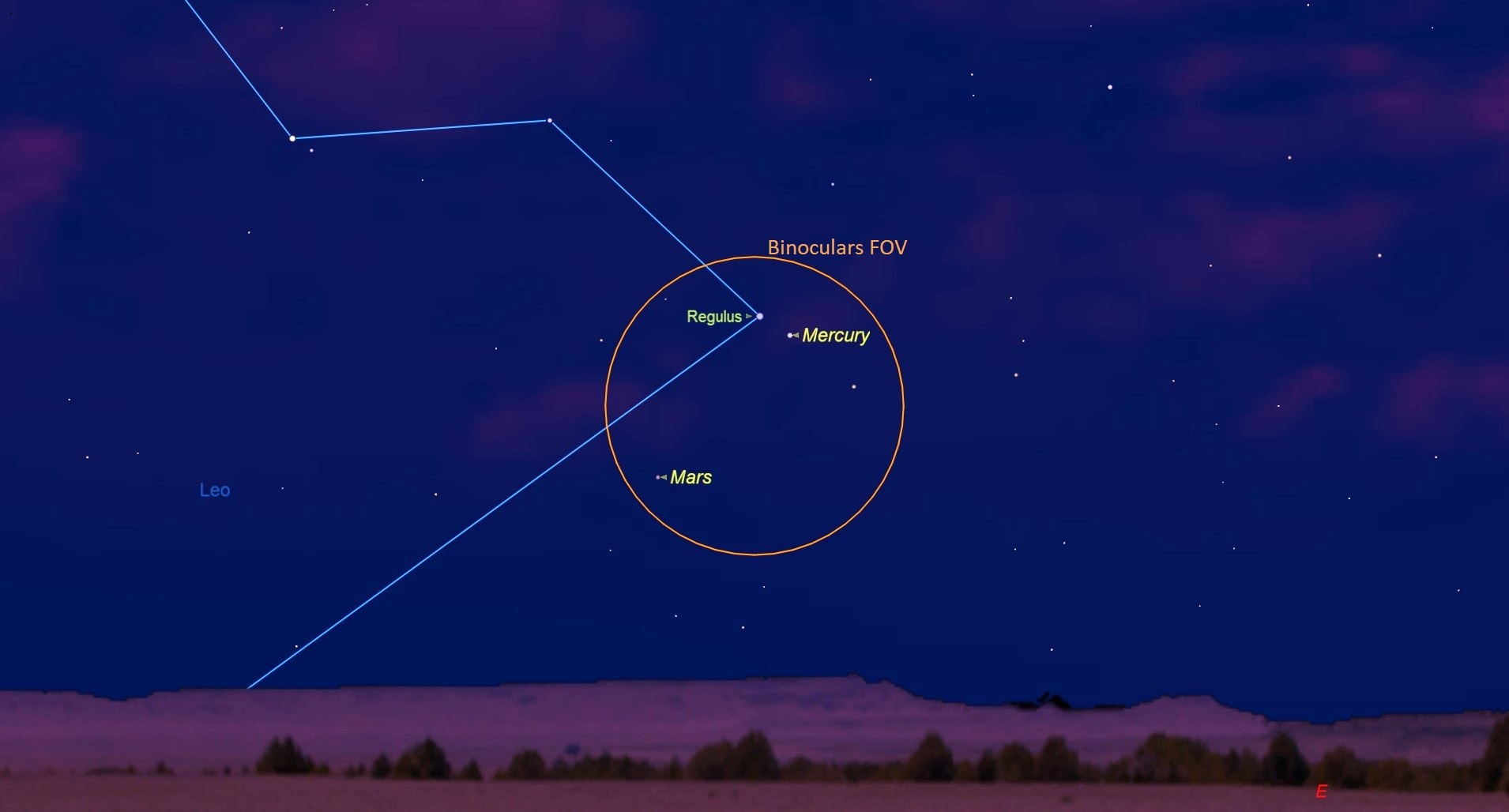Now's the Time to Spot (Not-So) Elusive Mercury

Once each year in the fall, Mercury moves into favorable position to be seen in the morning twilight sky. During this 10-day time frame, the so-called "elusive planet" is not so difficult to see after all.
If there is a planet that has gotten a bad rap for its inability to be spotted, it's Mercury. Here is just one example: In their book "New Handbook of the Heavens" (McGraw Hill, 1948), authors Hubert Bernhard, Dorothy Bennett and Hugh Rice discussed how to observe the bright naked-eye planets, and they played up Mercury's reputation for being hard to see.
"One of these points of light is elusive," they wrote. "That is Mercury, which stays close to the sun like a child clinging to its mother's apron strings. Because you must look for it so soon after sunset or before sunrise, there was a famous astronomer, Copernicus, who never saw the planet in all his life." [Best Night Sky Events of September 2017 (Stargazing Maps)]
Nonetheless, we are currently within a three-week "window of opportunity" for getting a good look at Mercury in the early-morning dawn sky. Mercury is called an "inferior planet" because its orbit is nearer to the sun than Earth's is. Therefore, Mercury always appears from our vantage point to be in the same general direction as the sun.
In ancient Roman legends, Mercury was the swift-footed messenger of the gods. The planet is well-named, for it is the closest planet to the sun and the swiftest of the sun's family: It averages about 30 miles per second (48 km/s), making its yearly journey around the sun in only 88 Earth days. Interestingly, it takes Mercury 59 Earth days to rotate once on its axis, so all parts of its surface experience periods of intense heat and extreme cold. Although its mean distance from the sun is only 36 million miles (58 million km), Mercury experiences by far the greatest range of temperatures: from minus 300 degrees Fahrenheit (minus 184 degrees Celsius) on its night side to nearly 900 degrees F (482 degrees C) on its day side.
At one time, this planet actually had two names, as skywatchers didn't realize it could alternately appear on one side of the sun and then on the other. The planet was called Mercury when it was in the evening sky and Apollo when it appeared in the morning. It is said that Pythagoras, in about the fifth century B.C., pointed out that they were the same.
Mercury in the morning
Mercury rises before the sun all of this month, and is surprisingly easy to see from now through Sept. 26. All you have to do is look low above the eastern horizon during morning twilight, from about 30 to 45 minutes before sunrise, for a bright yellowish-orange "star."
Get the Space.com Newsletter
Breaking space news, the latest updates on rocket launches, skywatching events and more!
Mercury will be at its greatest western elongation, 18 degrees to the west of the sun, on Sept. 12, rising as dawn breaks. This will be Mercury's best morning apparition of 2017. Mercury, like Venus, appears to go through phases as the moon does. When September began, Mercury was a slender crescent from our perspective on Earth. Currently, it appears about one-third illuminated, and the portion of its surface illuminated by the sun will continue to increase in the days to come. So although Mercury will begin to turn back toward the sun's vicinity after Sept. 12, it will continue to brighten steadily, which should help keep it in easy view over the next couple of weeks. [Planet Mercury: Some Surprising Facts for Skywatchers]
A rendezvous with Regulus and Mars
As a bonus this weekend, Mercury will be approaching the much dimmer blue-white star Regulus in the constellation of Leo, the lion. Rising 1 and a half hours before the sun on Sunday morning (Sept. 10), the Americas will see this zero-magnitude planet pass just 0.6 degrees to the lower right of the bluish first-magnitude star Regulus. Mercury will appear more than 3.5 times brighter than Regulus, and against the brightening dawn twilight, you might want to use binoculars to more readily pick out the star.

Located about 4 degrees to the lower left of Mercury and Regulus will be an even dimmer object shining with an orange-yellow hue. (Your clenched fist held at arm's length measures about 10 degrees of the sky.) That dimmer object is Mars — which has been invisible through much of the summer, languishing close to the sun and obscured by its dazzling light. But now, finally, Mars has begun to move out of the glare of the sun and, in the coming days and weeks, will become increasingly easier to see.
On Wednesday morning (Sept. 13), Regulus, Mercury and Mars will be lined up in that order, from upper right to lower left. And the following Saturday (Sept. 16), Mars and Mercury will engage in a very tight conjunction. From along the East Coast, the two planets will be separated by 0.3 degrees, or three-fifths of the apparent width of the moon. By the time the two planets come above the horizon for the West Coast, they will have gotten even closer: less than 0.2 degrees apart. Mercury will have brightened to magnitude -0.8, far brighter than +1.8-magnitude Mars. (Lower magnitudes signify brighter objects.)
Finally, on Sept. 18, about an hour before sunrise, check out a beautiful array low in the east-northeast sky. Venus will shine with its usual superior brilliance. Regulus will hover above it, while below it will be a skinny waning crescent moon. Mars will be to the lower left of the moon, and Mercury will be below it.
The speedy planet will still be easily visible as late as Sept. 26. Though it will be nearer to the sun, Mercury will have brightened to magnitude -1.3 — nearly as bright as Sirius, the brightest star in the night sky. Thereafter, it will drop back down under the dawn horizon.
Joe Rao serves as an instructor and guest lecturer at New York's Hayden Planetarium. He writes about astronomy for Natural History magazine, the Farmer's Almanac and other publications, and he is also an on-camera meteorologist for Verizon Fios1 News in Rye Brook, New York. Follow us @Spacedotcom, Facebook and Google+. Original article on Space.com.
Join our Space Forums to keep talking space on the latest missions, night sky and more! And if you have a news tip, correction or comment, let us know at: community@space.com.

Joe Rao is Space.com's skywatching columnist, as well as a veteran meteorologist and eclipse chaser who also serves as an instructor and guest lecturer at New York's Hayden Planetarium. He writes about astronomy for Natural History magazine, Sky & Telescope and other publications. Joe is an 8-time Emmy-nominated meteorologist who served the Putnam Valley region of New York for over 21 years. You can find him on Twitter and YouTube tracking lunar and solar eclipses, meteor showers and more. To find out Joe's latest project, visit him on Twitter.









